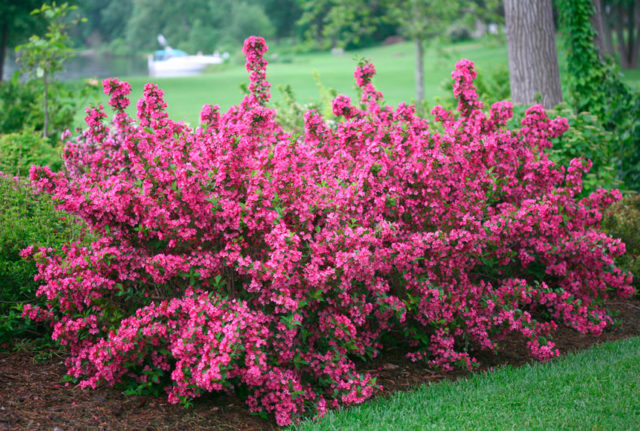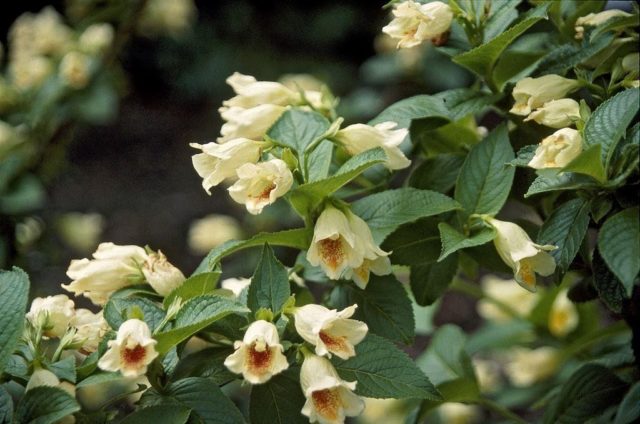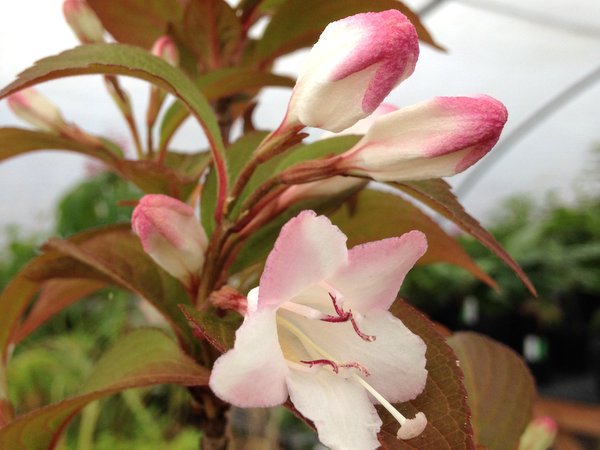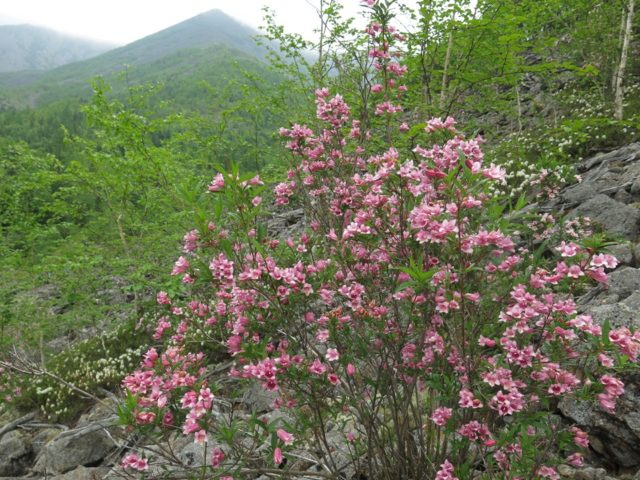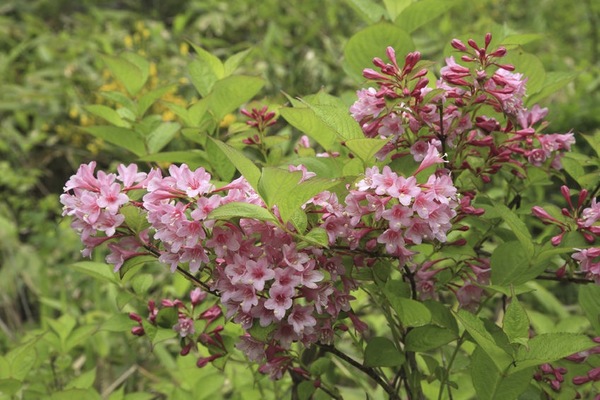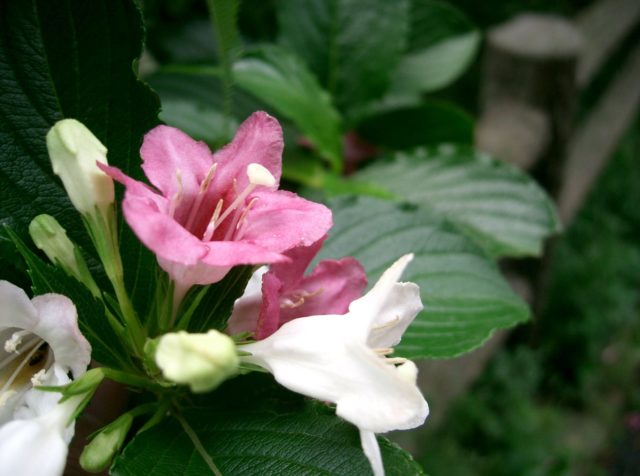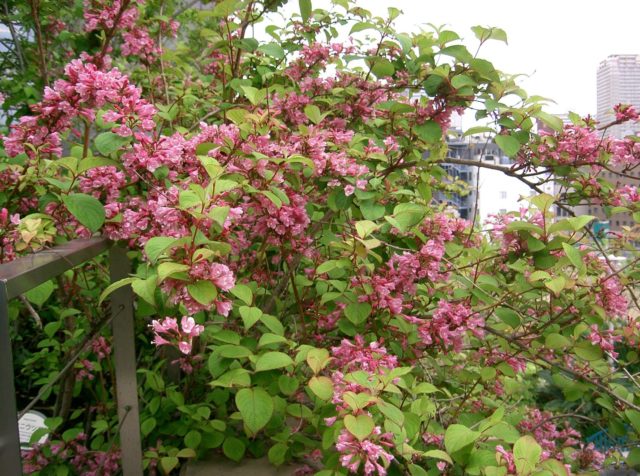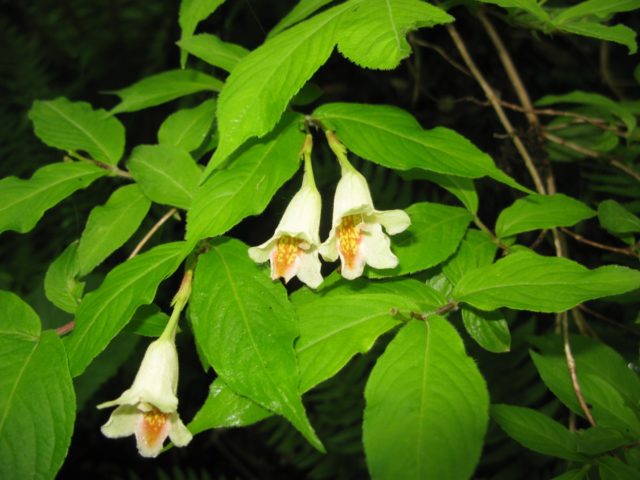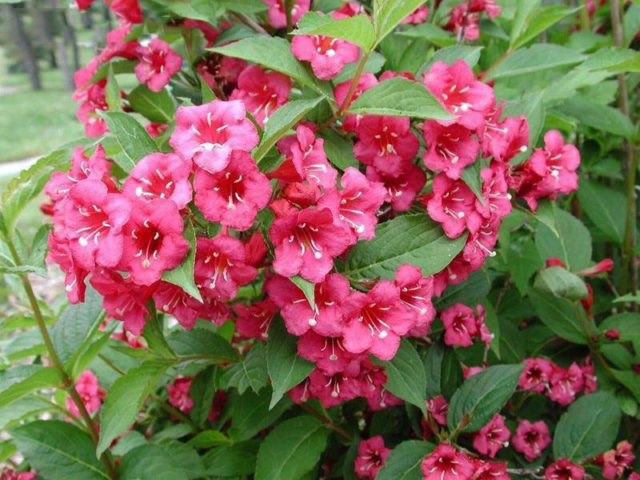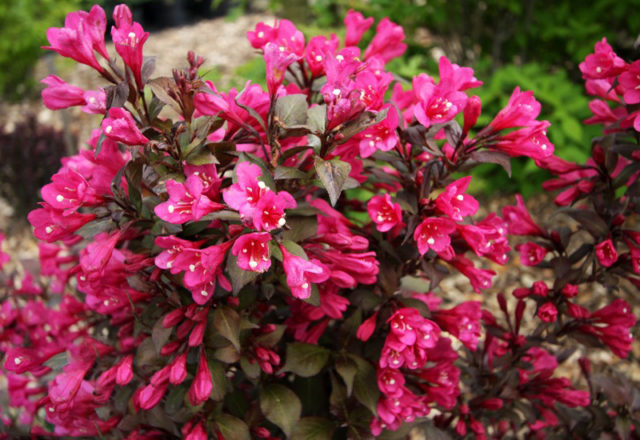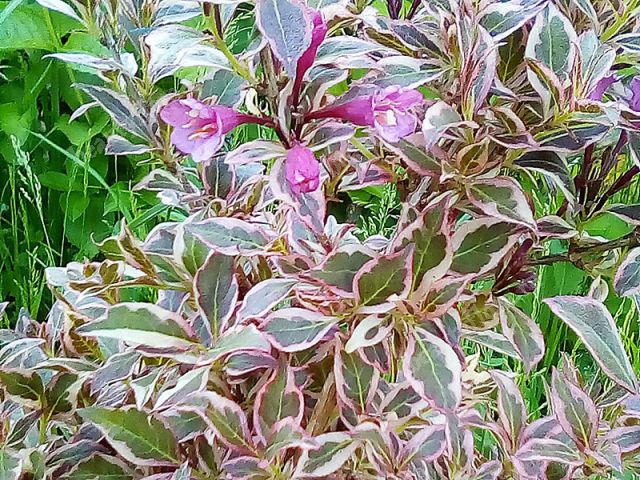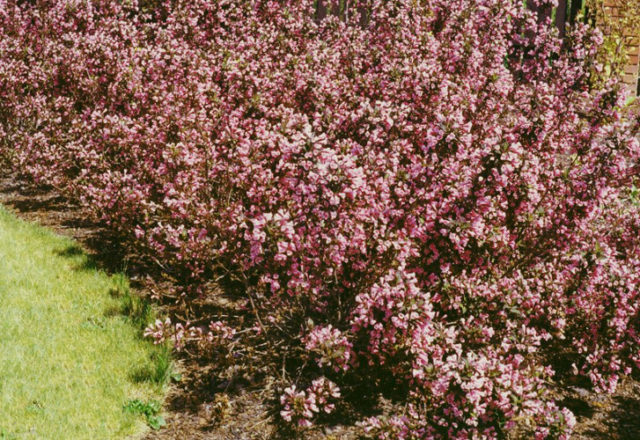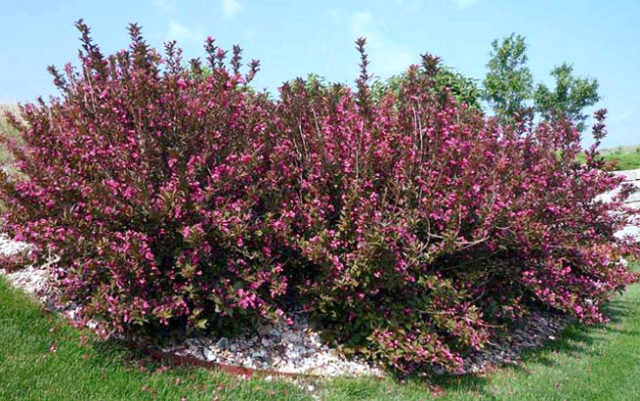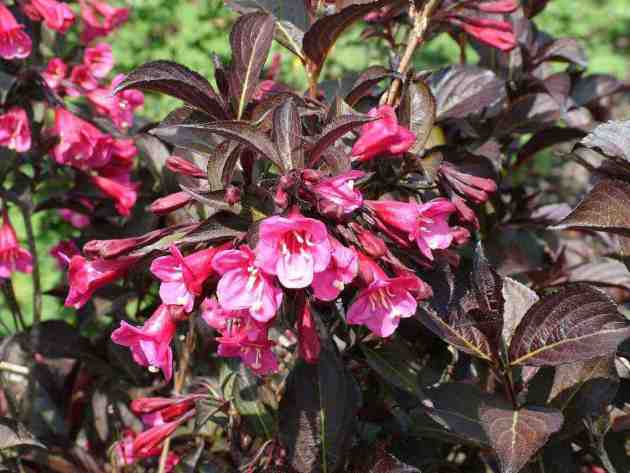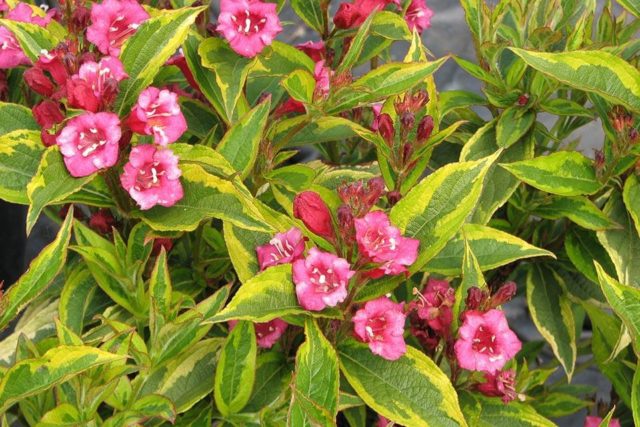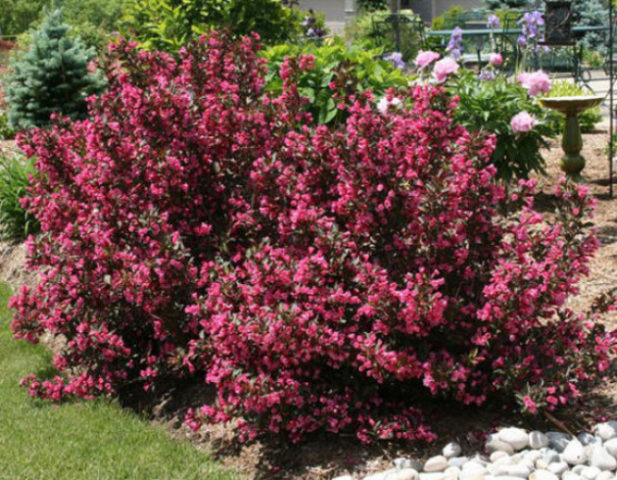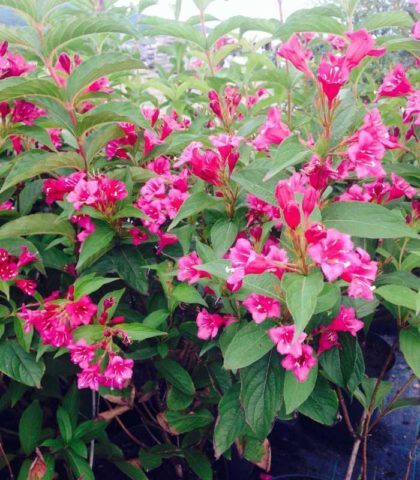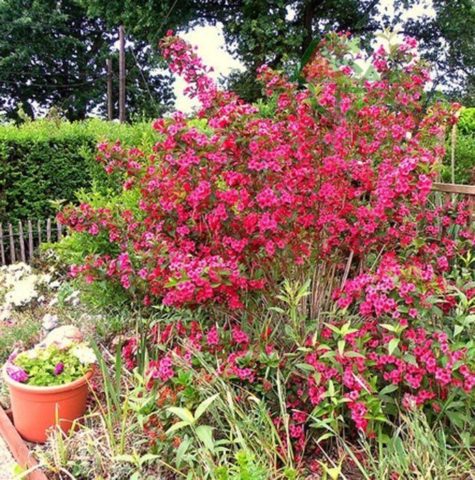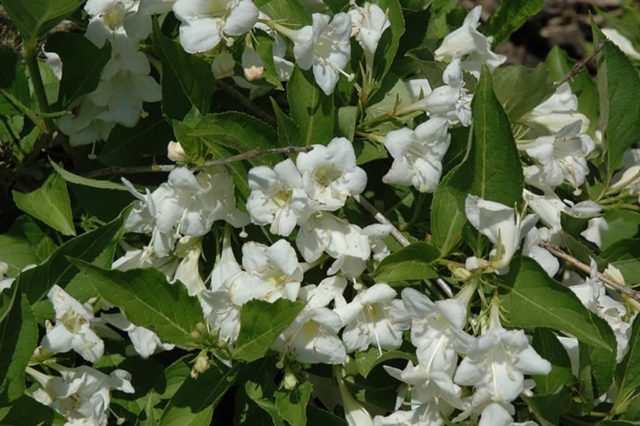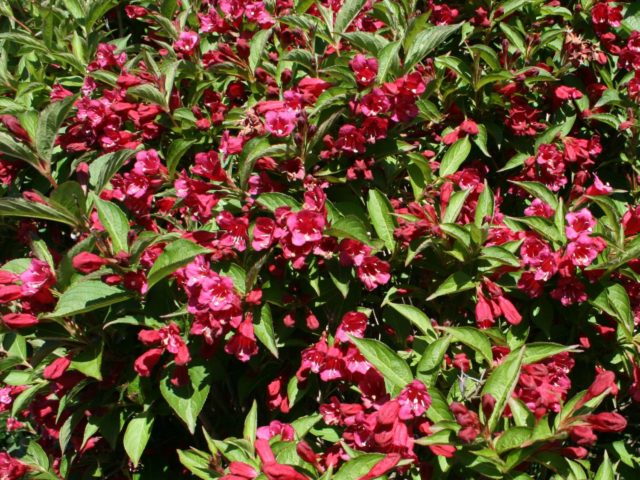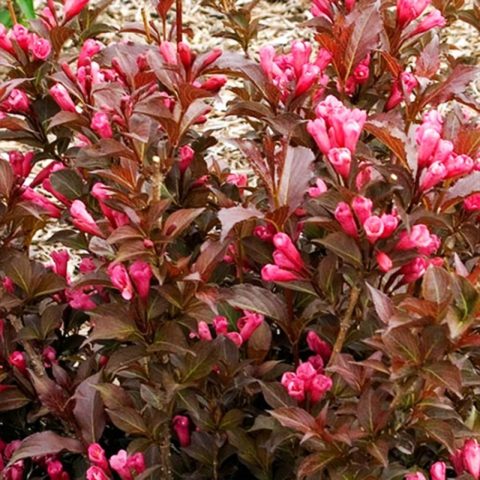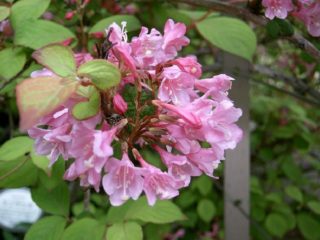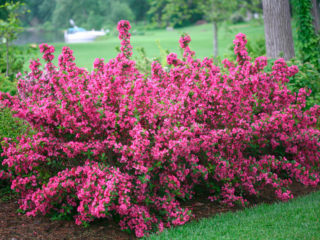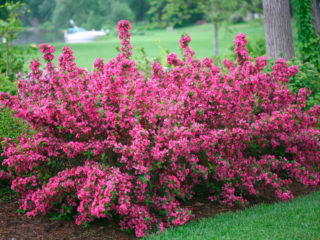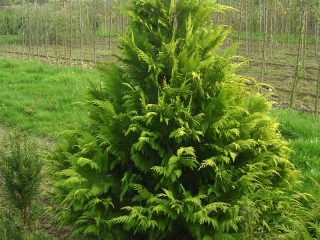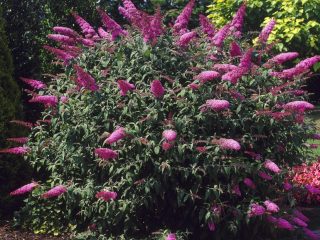Content
Weigela is a shrub belonging to the Honeysuckle family. The culture got its name in honor of the German botanist Christian Ehrenfried von Weigel. A photo and description of the weigela shrub will help gardeners when choosing a plant for the garden.
What does weigela look like
Weigela is a commonly used decorative element that connects tall trees and low-growing shrubs.
It blooms profusely from May to July. Weigela is a shrub that reaches a height of three meters. The leaves are bright green, do not fall off for a long time. There are red and brown foliage colors. The flowers are large, tubular, up to 3 cm long, collected in inflorescences located on the lateral shoots.
How weigela grows
Characteristics of the environment necessary for the successful growth of the weigela:
- calm place;
- fertile soil;
- the shrub develops ideally in the sun or in light partial shade;
- waterlogging is undesirable.
When these rules are followed, the plant achieves optimal growth, demonstrating decorative qualities.
Some of the weigel give wide crowns, so it is permissible to carry out a slight pruning of the shoots in order to give the plant the desired shape. Some varieties grow slowly - no more than 10 cm per year, others give abundant, rapid growth, due to which the plant matures in a short time.
Varieties of weigela
There are eight common, non-hybrid varieties of weigela:
- Weigela middendorffiana - blooms in spring and autumn with yellow flowers with spots of orange color. Shrub height - up to 1.5 m, planted singly, on lawns, under trees with sparse crowns.
- Weigela japonica - a plant not higher than 1 m. Leaves up to 10 cm long, slightly pubescent. In the middle lane, the culture needs shelter, but freezing is possible even after warming.
- Weigela suavis - a variety growing on the Kuril Islands, Primorye, Sakhalin. Rarely cultivated. The flowers are pink-purple, pink inside. The height of the shrub is 1.3 m.
- Weigela praecox - common in North Korea, in the south of the Ussuri region, prefers rocky slopes. The flowers are bright pink, white with a yellow tinge in the pharynx. It is recommended to plant in groups, singly on lawns, like a hedge.
- Weigela coraeensis - a Korean shrub that can grow up to 5 m. For the winter, it is necessary to insulate the planting, the seeds in the middle lane do not ripen. Flowers reach 3.5 cm in length, pink.
- Weigela hortensis Is a Japanese plant similar to the Korean variety. It is advisable to cover young specimens, adult bushes are frost-hardy.
- Weigela maximowiczii - shrub no higher than 1.5 m, yellow flowers, large. Distributed in the middle lane, begins to bloom in May.
- Weigela florida - common in Europe, garden forms have colored foliage. Flowers are pink.
Weigela varieties with photos, names and descriptions
The photo and name of the weigela, with or without flowers, will help you choose the desired variety, or determine the existing one. Each group of varieties has its own characteristics. So, hybrids look more impressive, undersized ones can be placed in flower beds, and winter-hardy ones do not need to be covered in autumn.
Low-growing varieties of weigela
Weigela dwarf varieties do not exceed 1.5 m in height. Most often, the bushes are even lower.
Minor Black
The height of the bush of representatives of this variety weigel is no more than 0.75 m, the maximum width is 1 m. The shoots are red-brown, the leaves are shiny, medium-sized, the same color as the shoots. Inflorescences appear in June, flowers are 2.5 cm in diameter, dark pink in color.
Monet (Verweig)
The height of the bush of this variety of weigela never exceeds 0.5 m. The leaves give the plant a special decorative effect. The leaf plate is colored in various shades - from green to red-pink. In summer, a white-pink border appears. In autumn, the border darkens. It blooms with light pink flowers.
Nana purpurea
The shrub never grows above 1 m. Weigela leaves are dark red, medium-sized. Flowering begins in June. Inflorescences of various pink shades are striking against the background of red foliage. It is recommended to plant the variety singly (as an accent color).
Victoria
In all respects, this weigela is similar to Nana Purpurea - no more than a meter, dark red crown, compact. The leaves are medium-sized, the inflorescences are pink, of various shades. The size of the flowers is proportional to the growth of the bush - no more than 2–2.5 cm. It is permissible to plant weigels Victoria and Nana Purpurea in a group.
Frost-resistant varieties of weigela
Winter-hardy varieties of weigela do not require shelter during an ordinary winter. Extremely cold, little snow is also tolerated well, however, additional insulation may be required.
Alexandra
Shrub 1.5 m high, has a spreading, wide crown. The foliage is either greenish-bronze or red-green. Blooms profusely, inflorescences are dark pink. Alternative name for weigela "Wine and Roses" (wine and roses).
Brigela
Tall, fast-growing weigela. The maximum height of the bush is 2.3 meters. The leaves are colored green and have a yellow border. The flowers are dark pink, bell-shaped. Due to the height, this variety is advised to be planted singly or in a group.
Purpurea
The plant is up to 1.5 m tall, the crown is dense, spreading, up to 2 m wide. The foliage changes color depending on the season. In spring, the leaves are red-brown, dark, then change color to a brown-green (red-green) shade. Flowers stand out strongly - bell-shaped, dark pink outside, light inside.
Rumba
A relatively undersized winter-hardy variety, not higher than 1.3 m. The crown is dense, compact. This variety of weigela belongs to varieties with dark leaves. Abundant flowering, tubular flowers, deep pink. This variety is frost-resistant.
Hybrid weigela varieties
Varieties of hybrid weigela (below in the photo) are of different frost resistance, the description must include an indication of how well the bush will endure the winter.
Bristol ruby
The largest among the hybrid varieties, up to 2.8 m in height, spreading crown, up to 3.5 m in diameter. The shrub is fast-growing. The bright green leaves are large, sometimes glossy and shiny. Flowering occurs in June, ruby-red inflorescences. In winter, the ends of the branches often freeze slightly, but the plant quickly recovers.
Candida
Tall shrub (2 m) with a compact crown, no wider than 1.2 m. The foliage is light green in color. Flowering begins at the end of May, the flowers are bell-shaped, large, snow-white. The color of leaves, flowers, remains unchanged.Weigela Candida belongs to frost-resistant varieties that can overwinter in central Russia without shelter.
Eva Rathke
A low-growing (up to 1 m) bush with a wide, spreading crown. The growth rate is average. Bright green foliage contrasting colors - carmine red on the outside, light pink on the inside. The flower is tubular. Long bloom, from June to mid-August. The variety has an average winter hardiness.
Naomi campbell
The bush belongs to dwarf hybrids of weigela, the height is not more than 0.6 m. The crown is compact, equal to the height of the plant. The leaves are dark purple, bronze. Purple-red flowers appear at the end of May. The variety is winter-hardy. This hybrid can be planted in flower beds, borders, flower beds.
How to choose the right variety
The choice of flowering weigela or another variety should be made not according to the photo, but according to the description and individual characteristics of the planting site.
- For the middle lane, northern regions, frost-resistant varieties are recommended. Heat-loving varieties do not survive the winter even when sheltered.
- For alpine slides, flower beds, borders, it is better to choose the lowest-growing varieties. The exception is complex multi-tiered compositions. In that case, a medium-sized shrub with a not very spreading crown is planted.
- In dry climates, it is advisable to choose a shrub where watering is possible. Large specimens will require abundant, regular irrigation, especially varieties designed for the weather in the middle zone.
- When you plan to plant a weigela under the windows, in a small front garden, you should choose a variety that does not grow above the windowsill. They also take into account the photophilousness of the variety, because some do not tolerate shade.
An additional important condition is soil. If the site is located on sandy, clayey soils, you should refrain from buying. The plant will either die or be constantly sore, which will affect the decorative qualities.
Conclusion
A photo and description of the weigela shrub give a complete picture of the plant, when it is necessary to decide whether to grow it in personal plots. However, it is important to remember that proper care gives the bush a decorative look. Even a varietal specimen can become nondescript if ignored.
